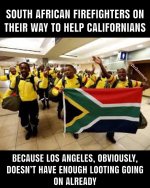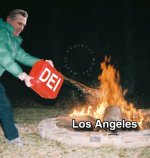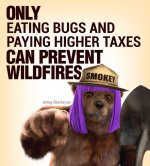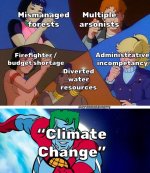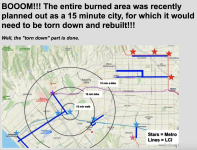This bears exploring. All the conspiracy types - who in fact are often at least partially correct, these days - all point to how SOME houses burned and OTHERS did not.
Directed radiation, say some. Blue roofs, say others.
No...since we watched this first fire since it started in ten acres (probably by Glow Bull Warming, a 28-year-old Venezuelan "immigrant" now with nothing to do) and had been predicted for years and especially the months previous...no directed-energy satellite involved. Just dry tinder and hot winds.
So, why? Watch how a fire unfolds. CONTRARY to common belief, the tongues of the fire don't spread fire, like me touching you with ink on my fingers. The flames are in fact hot combustible gases, released from organic material being heated. The gases are past the flash point, and as they rise up, they burn. Which is why frequently, in a spreading fire, you see grey or black smoke, and then it explodes in a ball of flame.
So. The house next door has gone up - sparks on the roof from brush or grass burning, whatever. The HEAT hits the adjacent structure. First plastic starts melting, then the paint darkens and softens, and then, edges of what wood or asphalt roofing is there, erupt into fire. First on the outside - but the heat spreads through the wall, and the interior wall starts smoking, and igniting.
If the adjacent structure is concrete, or with fire-resistant material on the outside (and insulated to prevent the heat from getting inside) there won't be any fire. If PART of the structure is built differently, as we see with some commercial row fires, then the fire stops.
Cars? It was not unusual to see a couple of cars in a yard. One burned, one not. Now, remember, these cars were outside, and on concrete pads. The actual fire didn't come up to them.
They got hot. One began to burn from the heat, and the other, perhaps in a breeze path between two buildings, or otherwise shielded from the heat...got hot but not to a critical level.
Fire is strange that way, especially structure fires in winds. I worked with rural volunteer firemen - not AS firemen, we just worked at the same place. Fires happen. They would leave when the call came out and then, hours later, they'd be back with stories.
Second stories or attics burning off, were not uncommon. We had a major lake in the area, and this encouraged winds. To see two exterior walls untouched, and other parts of the house burned to the footing, was not at all uncommon.
All these "Aftermath" videos are interesting demonstrations of that - but only if you're open to how this isn't scientifically supernatural, but only the way large fires can behave.


